Winter Tomato Growing: Tips and Tricks for Success
Go4Turf
February 15, 2024
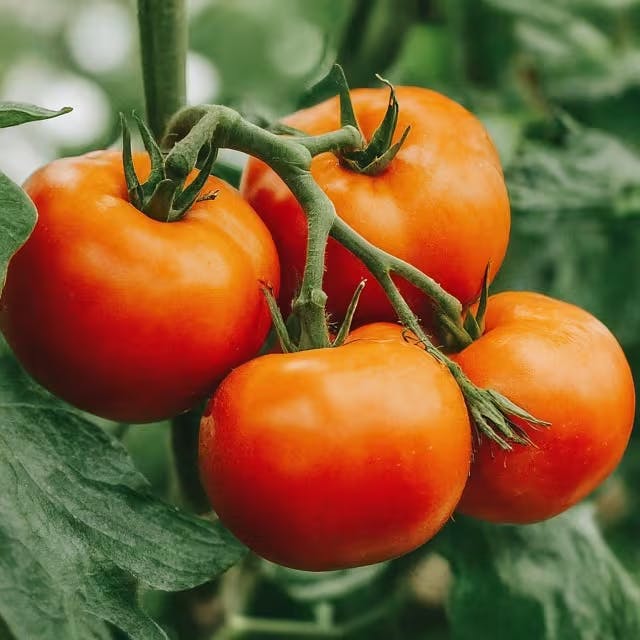
Embarking on a winter tomato growing journey may initially appear intimidating, but it actually offers an exciting challenge for both beginner and seasoned gardeners. This article is designed to provide invaluable advice on selecting the right tomato varieties and mastering the growth conditions necessary for success. We aim to equip you with essential knowledge on caring for tomatoes during the colder months and to help you weigh the pros and cons of growing them indoors versus outdoors. Our in-depth guide is tailored to help your winter tomato garden flourish, guaranteeing an abundance of fresh, tasty tomatoes even in lower temperatures.
Key Takeaways
Growing tomatoes in winter is a feasible project for gardeners of all skill levels, offering a unique challenge with the promise of fresh produce during colder months.
Selecting the right tomato varieties is crucial for cold weather success, with certain types being more suited to indoor or outdoor winter growing conditions.
Weighing the pros and cons of indoor versus outdoor cultivation allows gardeners to make informed decisions based on their space, resources, and climate.
Key factors for successful winter tomato growing include understanding the plants' basic needs, proper variety selection, and mastering indoor/outdoor growing techniques.
Managing light and temperature is essential for winter tomato gardening, requiring specific adjustments to ensure growth and fruit production during the colder season.
Understanding the Basics of Growing Tomatoes in Winter
Growing tomatoes during winter months might seem challenging, but with the right approach, it's a rewarding endeavor. One of the most effective ways to enjoy fresh tomatoes year-round, without bearing the high costs of heating a greenhouse, is by cultivating them in indoor containers. This method is both practical and affordable, offering a viable solution for hobbyists eager to reap the benefits of homegrown tomatoes throughout the cooler seasons. Taun Beddes, a USU Extension horticulturist, highlights this approach as an insider tip for bypassing winter's harsh conditions. Learn more about winter tomato growing from Taun Beddes.
Hydroponics, a soilless gardening method, is another fantastic option for growing tomatoes indoors during the winter. It's especially suitable for those with limited space or the desire to garden year-round. Hydroponics conserves water, wards off weeds, and, with the use of supplemental lighting—such as LED or fluorescent bulbs—ensures your tomatoes thrive despite the lack of natural sunlight. Although it's commonly adopted for herbs and leafy greens during the colder months, tomatoes, along with strawberries, cucumbers, and peppers, flourish in hydroponic systems in warmer periods. DIY "Deep Water Culture" systems are a cost-effective entry into hydroponics, requiring just a few basics like a water container, a support structure, appropriate substrates, and lighting. Dive deeper into small-scale hydroponics.
Moreover, integrating these modern gardening techniques with conventional wisdom is key. Remember to select varieties that are known to perform well indoors, such as cherry or grape tomatoes, for the best yield. Maintaining a consistent temperature and providing sufficient light, ideally 16-18 hours a day, will simulate the outdoor conditions tomatoes love. Careful attention to watering and fertilizing will ensure your winter tomato garden is not only possible but prosperous. Enrich your gardening knowledge even further by exploring how to transform your black thumb into a green thumb, welcoming bountiful harvests regardless of the season.
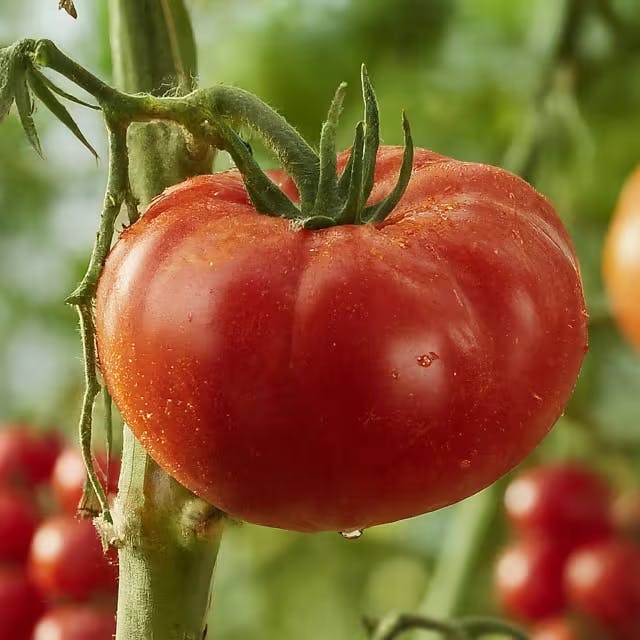
Choosing the Right Tomato Varieties for Cold Weather
For those diving into the challenging yet rewarding endeavor of winter tomato growing, selecting the right varieties is a pivotal first step. While all tomatoes cherish the sun and warmth, certain types have a better tolerance for cooler temperatures, giving them a fighting chance during the winter months.
When choosing tomato varieties for colder weather, look for terms like "cold-tolerant", "short-season", or "early harvest" on seed packets or plant tags. These tomatoes are engineered to thrive in less-than-ideal conditions, ensuring a bountiful harvest despite the chill.
Here’s a small table to help you start:
Variety Name | Type | Maturity (Days) | Notable Features |
Glacier | Determinate | 55 | Perfect for cold climates, produces small, sweet fruits |
Siberian | Determinate | 48 | Can survive frosts, offering medium-sized tomatoes |
Sub Arctic Plenty | Determinate | 45 | Truly early variety, created for short growing seasons |
If you're trying to transform your gardening skills from novices to green-thumbed expert, knowing which plants can thrive in your environment is essential. Mastering the sunlight, water, nutrients, and more for various plants can significantly assist in your gardening journey, ensuring that your winter tomatoes receive the care they need to flourish.
Remember, while the right variety can set you up for success, the care you provide—ensuring adequate light, warmth, and protection from frost—is just as critical. Short-season varieties might mature quickly, but they also need to be monitored closely and provided with a nurturing environment to thrive.
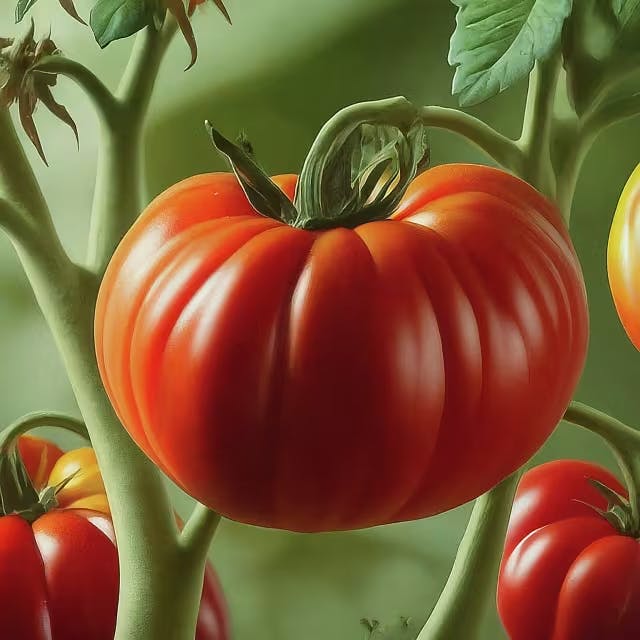
Indoor Versus Outdoor Winter Tomato Growing: Pros and Cons
Choosing between indoor and outdoor gardening for your winter tomato crop comes with its own set of considerations. Here’s a quick overview to help you decide:
Indoor Gardening:
Pros:
Controlled environment allows for temperature and humidity management, essential for tomato growth.
Protection from pests and extreme weather, ensuring healthier plants.
Hydroponics can be an efficient choice for those with limited space, offering a soilless option that's both water-efficient and weed-free (Learn more about hydroponics).
Cons:
Initial setup can be costly, particularly with the need for artificial lighting.
Requires consistent care and monitoring, including watering, lighting adjustments, and temperature control.
Outdoor Gardening:
Pros:
Tomatoes can benefit from natural sunlight, which is ideal for their growth.
Larger space allows for bigger yields and the cultivation of multiple plants.
Cons:
Vulnerable to pests, diseases, and variable weather conditions, which can negatively impact growth and yield.
Requires seasonal adjustments, as detailed in our article on preparing your garden for fall, to ensure a successful crop.
Whether you opt for the controlled environment of indoor gardening or the natural benefits of an outdoor setup, both choices require dedication and care. Utilizing techniques such as starting seeds indoors can give your tomatoes the head start they need, regardless of where they end up growing. Remember, successful winter tomato growing hinges on understanding and managing the specific needs of your plants, be it indoors or out.
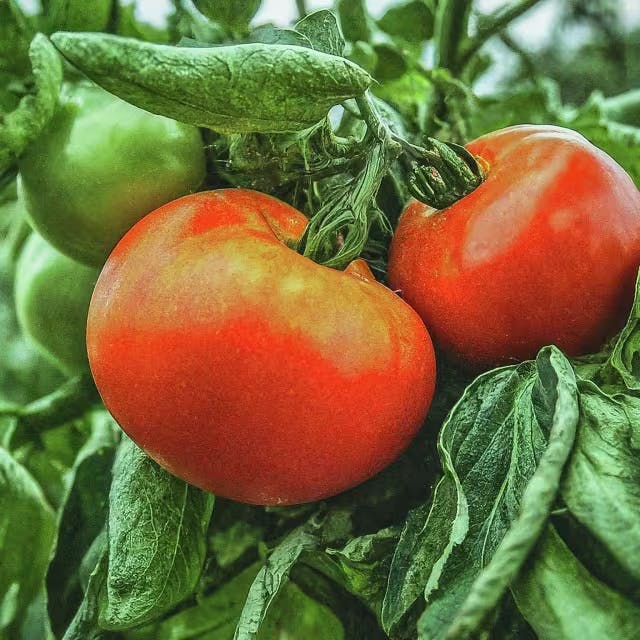
Key Tips for Successful Winter Tomato Cultivation
Growing tomatoes in winter can be rewarding with the right approach. Here are succinct strategies:
Choose the Right Varieties: Opt for cold-tolerant tomato varieties. Cherry and grape tomatoes are hardy options that can thrive in cooler conditions.
Start Seeds Indoors: Begin with indoor seedlings to give them a head start. This is crucial for extending the growing season beyond the typical outdoor constraints.
Provide Adequate Light: Tomatoes require plenty of light to grow. If natural sunlight is insufficient, consider using grow lights to ensure they receive at least 8-10 hours of light daily.
Maintain Ideal Temperatures: Keep indoor temperatures between 65-75°F for optimal growth. A steady temperature is key to preventing shock or stunting development.
Ensure Proper Watering: Over-watering can be as detrimental as under-watering. Ensure the soil is consistently moist but not waterlogged.
Nutrition is Key: Use a balanced, slow-release fertilizer to provide essential nutrients. Regularly check the plant’s nutrition levels and adjust as needed.
Disease and Pest Vigilance: Monitor plants closely for signs of disease or pest infestations. Early detection and treatment can save your crop.
Pruning for Better Airflow: Prune excess foliage to improve air circulation. This helps prevent fungal diseases and encourages stronger growth.
For a deep dive into maximizing plant health and growth, including tomatoes, consider reviewing essential gardening tips. Furthermore, understanding the importance of preparing your garden for changing seasons can be beneficial, as detailed in preparing your garden for fall. This foundational knowledge, combined with specific strategies for winter tomato growing, sets the stage for a successful harvest.
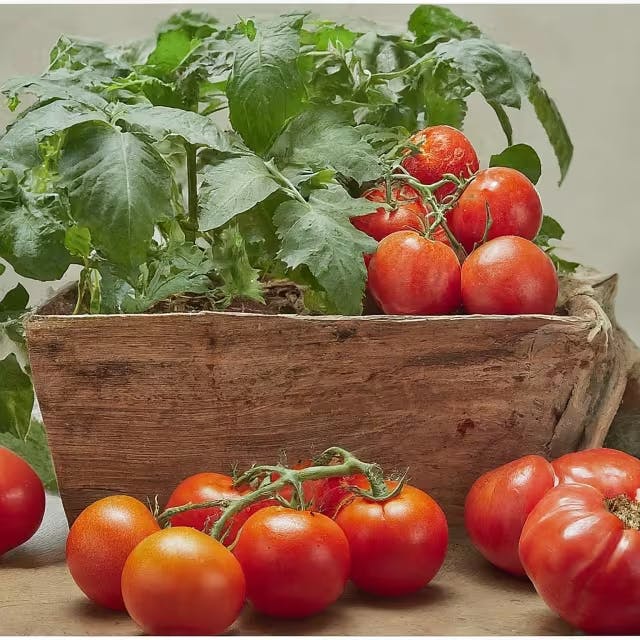
Managing Light and Temperature for Thriving Winter Tomatoes
To ensure your tomatoes thrive even in winter, paying close attention to light and temperature is crucial. Tomatoes require a consistent temperature of 65-85°F to grow properly. However, during winter, achieving this without artificial heat can be challenging. A solution is to use heating mats for seed starting and small greenhouse heaters for larger spaces.
For light, tomatoes need about 8-10 hours of sunlight per day. In winter, when daylight is scarce, consider supplementing with grow lights. LED or fluorescent grow lights are excellent choices as they don't emit too much heat but provide the necessary light spectrum for plant growth.
To balance these factors effectively, consider the following tips:
Place heating mats under seed trays to encourage germination.
Use a thermometer to monitor the temperature, ensuring it remains within the ideal range.
Position grow lights approximately 6-12 inches above the plants, adjusting as they grow.
Invest in a timer for your lights, mimicking natural daylight hours to stimulate growth.
Remember, managing these conditions not only supports the growth of your winter tomatoes but also improves their flavor and yield. For more insights on ensuring plant health and growth, explore Transform Your Black Thumb into a Green Thumb: Essential Tips.
Understanding the impact of environmental factors on plant growth is key. Light and temperature are particularly significant. Tailoring conditions to meet your tomatoes' needs ensures healthy development and a bountiful harvest. For a deeper dive into how these factors influence plant growth, visit Environmental Factors Affecting Plant Growth. Winter tomato growing, with the appropriate techniques and considerations, stands as a viable and rewarding endeavor, ensuring a fresh supply of tomatoes even in the colder months. By choosing the right varieties, managing your growing environment—whether it's indoor, hydroponic, or a carefully monitored outdoor setup—and paying close attention to the specific needs of tomato plants during winter, you can achieve success. Adopting these tips and tricks for winter tomato cultivation will not only extend your gardening season but also add a fresh, home-grown touch to your winter meals.
Frequently Asked Questions
What are the best tomato varieties for winter growing indoors?
For successfully growing tomatoes indoors during the winter, select cold-tolerant varieties such as cherry or grape tomatoes. Ensure these plants receive at least 8-10 hours of artificial light daily and maintain temperatures between 65-75°F. Opt for hydroponics or container gardening to maximize space and control growing conditions. Adequate watering, consistent temperature, and sufficient lighting are vital for your tomatoes to thrive in cooler seasons.
How can hydroponics improve winter tomato growing success?
Hydroponics can significantly improve winter tomato growing success by offering a controlled environment that is not affected by outdoor winter conditions. This method allows for year-round cultivation, efficient water usage, and the elimination of soil-borne diseases and weeds. By using supplemental lighting, such as LED or fluorescent bulbs, tomatoes can receive the adequate light they need to thrive during the shorter days of winter. Hydroponics also facilitates faster growth and potentially higher yields, making it an attractive option for those looking to enjoy fresh tomatoes even in the coldest months.
What are essential light and temperature conditions for growing tomatoes in winter?
To successfully grow tomatoes in winter, ensure:
Adequate Light: Provide 8-10 hours of light daily, using grow lights if natural sunlight is insufficient.
Ideal Temperatures: Maintain indoor temperatures between 65-85°F, employing heating mats for seedlings and greenhouse heaters for larger spaces.
Remember, consistent management of light and temperature is key to thriving winter tomatoes.
How do I choose between indoor and outdoor gardening for winter tomatoes?
Choosing between indoor and outdoor gardening for winter tomatoes largely depends on your specific situation. For indoor gardening, the controlled environment offers protection from pests and extreme weather, making it ideal if you can manage the need for artificial lighting and consistent care. On the other hand, outdoor gardening benefits from natural sunlight and allows for larger yields but requires more seasonal adjustments and is more susceptible to pests and diseases. Both approaches demand dedication and understanding of the plants' needs to ensure a successful winter tomato crop.
What care tips ensure success in growing tomatoes during the cold months?
To ensure success in growing tomatoes during the cold months, consider starting seeds indoors to extend the growing season and selecting cold-tolerant varieties such as cherry or grape tomatoes. Provide sufficient light, at least 8-10 hours a day, using grow lights if natural sunlight is insufficient. Maintain indoor temperatures between 65-75°F for optimal growth. Consistent watering and a balanced fertilizer are crucial, as is vigilance against diseases and pests. Pruning for better airflow helps prevent fungal diseases and encourages stronger growth.
What are the advantages of starting tomato seeds indoors for a winter crop?
Starting tomato seeds indoors for a winter crop presents several advantages including the ability to control the growing environment, protection from seasonal pests and weather challenges, and an extended growing season that would not be possible outdoors in cooler climates. This approach also allows for the use of efficient hydroponic systems, which can save space and conserve water, all while potentially increasing yields through the use of supplementary lighting like LED or fluorescent bulbs, ensuring tomatoes thrive regardless of the lack of natural sunlight.